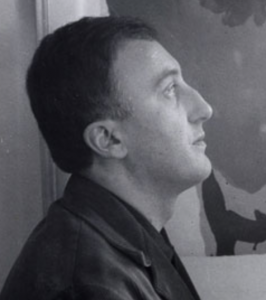Biography

After completing his studies at the Brera Academy, in 1951 he promoted the Nuclear Movement together with Sergio Dangelo and Gianni Dova and held his first solo exhibition at the San Fedele Gallery in his hometown. In 1953 he met Asger Jorn, with whom he founded the International Movement for an Imaginist Bauhaus, siding against the forced rationalization and geometrization of art. The following year he organized the International Ceramics Meetings in Albisola, in Liguria. In his artistic research, which is expressed through polymaterial and polychromatic collages, on the one hand we distinguish a playful vein, where the pleasure of painting with all sorts of materials prevails and on the other a strong civil commitment and a critique of the contemporary, which it is expressed in the generals and military parades of the sixties, and even more in the works of the seventies, such as the funeral of the anarchist Pinelli (1972) and the Apocalypse (1979). In the 1980s, temporarily abandoning collage, he created the Metamorfosi e Metafore (1988) series, in which he developed a representation of the imaginary and the fantastic. In 1993 the cycle of tribal masks begins, assemblies made with the scraps of modern civilization to create ironic and colorful masks, followed by Felt (1993-98) and Totem (1997). There are numerous relationships between the artist and Italian and foreign poets and writers, which lead to various collaborations and the creation of different artist books, accompanied by prints or original multiples. In 1999 Baj reaffirmed once again his strong links with literature by creating a series of 164 portraits inspired by Marcel Proust’s Guermantes. There are also many collaborations with other artists, including Lucio Fontana and Piero Manzoni. In 2001 he began a cycle of works dedicated to the stories of Gilgamesh, king of the Sumerians. Baj died in Vergiate (Varese) on June 16, 2003.